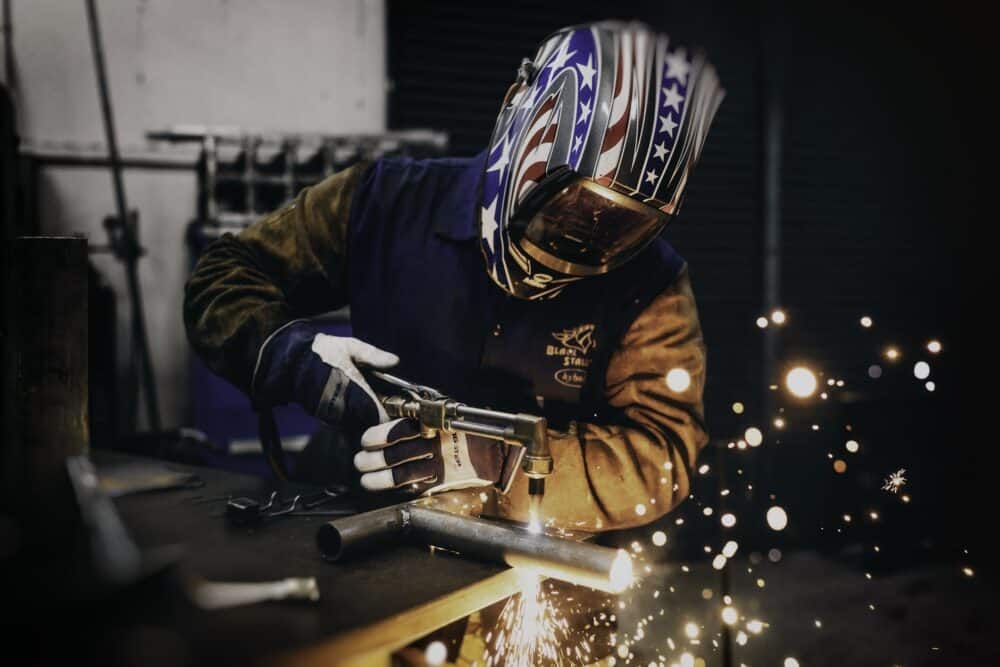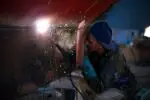According to the US Consumer Product Safety Commission, there are around 10,000 eye injuries welding! Therefore, wearing a welding helmet and most importantly, wearing the correct shade of the lens is very important.

Darker lens shades will unnecessarily limit your focus on the welding equipment and metals and lighter shades won’t be enough to protect your eyes from the flash burning!
Normally the shade setting for a welding helmet ranges from shade 8 to shade 13. But there are lenses available for light duty welding activities such as cutting, grinding, chipping, etc. where the shade of the lenses can be as low as shade 2 to shade 8.
This article will tell you in details about the different shades of the welding lenses and which shade is perfect for you and why?
What are you waiting for?
Let’s start exploring…
What shade should my welding helmet be?
Welding helmets protect your eyes from the harmful UV rays, electric sparks, flashes, gas, flame, heat and sudden flash of light.
If you have not put your welding helmet during the welding process, it might affect your eyes from giving a burning sensation to damaging the eyes by getting struck by flying molten metals or sparks!
Thus, the lens in the welding helmets protect your eyes from flash burning which happens due to exposure to direct heat and flash that are produced while welding.
Before knowing what shade of lens should be in your helmet, you need to understand what the numbers in the lens mean and what factors affect them.
Beginning with the numbers in the shade of the lens, it means the darker the lens is the greater will be the number of the shade. For example, shade 12 lenses will be darker than shade 8 lenses.
Darker shade lenses will obviously give better protection from glare and flash burn to your eyes. But, this does not mean that you will always need the darkest shade lenses for your job!
The heat and flash generated by higher amperages welding machine will be more than lower amperages machine. So, the higher the current and flame needed in your welding process, the greater should be the shade of your lens!
You can select any shade between shade 10 to shade 13 as the shade of your lens for a safety weld. Shade 10 to 13 lenses are dark enough to prevent your eyes from flash burning or heat.
How are shade numbers used in welding helmets?
| Type of welding | Shade numbers |
| Shield metal arc welding (SMAW) | 7 to 11 |
| Gas metal arc welding (GMAW) | 7 to 10 |
| Gas welding | 4 to 6 |
| Gas tungsten arc welding (GTAW) | 8 to 10 |
| Carbon arc welding | 14 |
| Oxygen cutting | 3 to 5 |
| Flux cored arc welding | 7 to 10 |
| Heavy air carbon arc cutting | 11 |
| Light air carbon arc cutting | 10 |
| Plasma arc welding (PAW) | 6 to 11 |
| Heavy plasma arc cutting | 10 |
| Light plasma arc cutting | 8 |
| Medium plasma arc cutting | 9 |
Shade numbers in welding helmet lenses range from shade number 2 to shade number 14.
Now, let’s learn about the shade numbers in details:
Shade #5:
Shade 5 in lenses is used for light welding works like cutting, grinding, and works that involves using of a torch. However, this shade will not be adequate for such activities as TIG or MIG welding because the excessive arc light produced in these processes cannot be restricted by shade number 5.
Shade #10:
Shade number 10 is neither too dark nor too light. It is just enough for medium amperages. So, if your welding involves using moderate amount of amperages, this shade should be enough for you.
Shade #12:
Shade number 12 is the most widely used shade range in the field of welding. This shade is dark enough to protect your eyes from the arc light produced in high amperages and not too dark for straining your eyes with making it difficult to see the arc light for long hours.
This shade is found in both welding glasses and welding helmets. So, if you are confused which shade to get and want to weld comfortably, you should always choose shade number 12.
Shade #13:
Shade number 13 can be used for all the welding types and is the darkest one available in welding glasses. This shade is very dark and is used in non-industrial projects involving heavy duty welding activities.
Shade #14:
Shade 14 is the darkest shade range available and is used in welding activities that uses high amperages. This shade however, will strain your eyes if you wear it for long hours and can make it difficult for you to see the arc light clearly.
How do you adjust the shade on a welding helmet?
Before knowing how to adjust the shade on a welding helmet, you need to know that there two types of lenses available: one with a particular shade number in the lenses and the other is the auto darkening one.
But there is also a type of welding helmet available where you can adjust the shades of the lenses and you can do so by adjusting the setting in the adjustment knob. Also, in the auto darkening lenses the adjustment knob is available on the left side of the helmet.
What determines the correct shade of lens for use during welding?
The shade of the lens always will depend on the amperage you are using in the welding. The higher the amperage, the more will be the intensity of the arc light and the more will be the shade of the lens.
And it’s a wrap:
You need to protect your eyes during the welding because welding involves the risk of eye hazards. Lacks of necessary precautionary measures will only aggravate the risks of eye injuries.
The determination of correct shade of the lens is important because too light shade of the lens will not be able to safeguard your eyes against the glare, heat, flash and sparks of the flash arc and too dark lens when not required will unnecessarily strain your eyes!
Determine the correct shade of the lens you require from the chart mentioned above and enjoy safe and comfortable welding!
That’s all for this article! Will be back with another informative article soon!
Till then, take care and stay safe!






